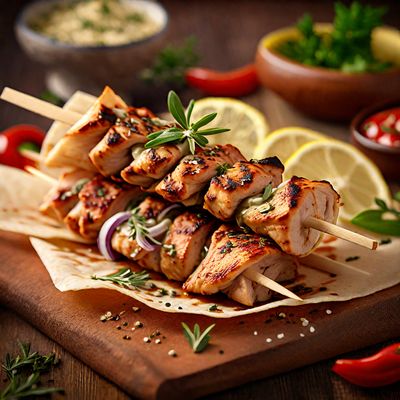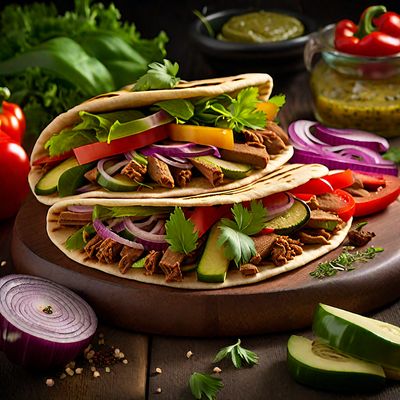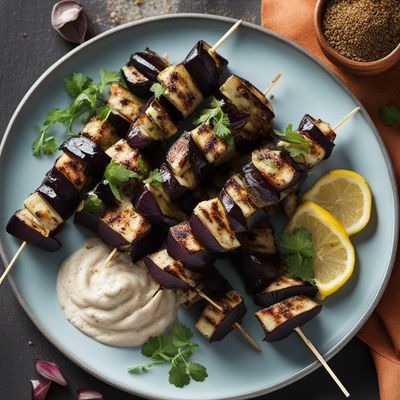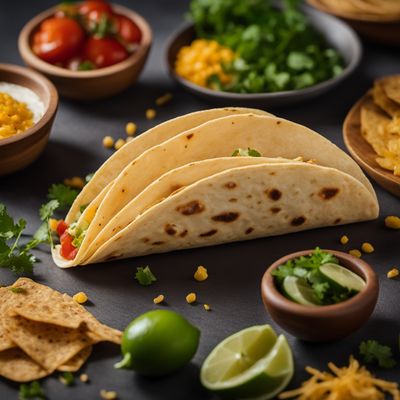
Ingredient
Pita bread
The Versatile Middle Eastern Flatbread: Pita Bread Unveiled
Pita bread is a round, flatbread that is typically made from wheat flour. It is characterized by its soft and chewy texture, with a thin crust that puffs up when baked, creating a hollow pocket inside. The pocket makes it perfect for stuffing with various fillings or for scooping up dips and spreads. Pita bread can come in different sizes, ranging from small to large, and can be found in both white and whole wheat varieties. Its neutral flavor allows it to complement a wide range of ingredients and cuisines.
Origins and history
Pita bread has a rich history that dates back thousands of years to ancient Mesopotamia, which is now modern-day Iraq. It is believed to have been a staple food for nomadic tribes in the region, as it was easy to make and transport. Pita bread gained popularity throughout the Middle East and Mediterranean, becoming an integral part of their culinary traditions. Today, it is enjoyed worldwide and has become a popular choice for sandwiches, wraps, and as a side dish.
Nutritional information
Pita bread is a good source of carbohydrates and provides essential nutrients such as fiber, protein, and iron. A typical serving of pita bread (one large pita) contains around 165 calories.
Allergens
Pita bread may contain gluten, making it unsuitable for individuals with gluten intolerance or celiac disease.
How to select
When selecting pita bread, look for ones that are soft and pliable, without any signs of dryness or cracks. Freshly baked pita bread should have a slight warmth to it. Additionally, check the expiration date to ensure freshness.
Storage recommendations
To maintain the freshness of pita bread, store it in a plastic bag or airtight container at room temperature for up to 2 days. For longer storage, freeze the bread in a freezer bag for up to 3 months. Thaw frozen pita bread at room temperature or briefly warm it in a toaster or oven before use.
How to produce
Pita bread can be made at home by combining flour, water, yeast, salt, and a small amount of oil. The dough is then kneaded, allowed to rise, and divided into small balls. These balls are rolled out into flat circles and baked in a hot oven until they puff up and develop a golden color.
Preparation tips
Pita bread can be enjoyed in various ways. It can be used as a base for sandwiches, wraps, or gyros, or torn into pieces and used to scoop up hummus, baba ganoush, or other dips. To enhance its flavor, lightly toast or warm the pita bread before serving. For a crispy texture, brush the bread with olive oil and bake it in the oven until it turns golden brown.
Culinary uses
Pita bread is commonly used in Middle Eastern and Mediterranean cuisines. It is a popular choice for making falafel sandwiches, shawarma wraps, and souvlaki. It can also be used as a base for pizza or as a vessel for filling with grilled vegetables, meats, or salads.
Availability
Pita bread is widely available in Middle Eastern grocery stores, supermarkets, and bakeries. It can also be found in many international food sections or online retailers.
More ingredients from this category
Recipes using Pita bread » Browse all

Egyptian-style Chola Sandwich
Spiced Chickpea Sandwich with Egyptian Flair

Authentic Greek Souvlaki
Mouthwatering Greek Souvlaki Delight

Italian-style Gyros
Mediterranean Delight: Italian-inspired Gyros

Vegetarian Gyros
Mediterranean Delight: Vegetarian Gyros with Tzatziki Sauce

Greek-style Tapas
Mediterranean Mezze Delight

Bosnian-Style Caesar Salad
Sarajevo Caesar Salad: A Bosnian Twist on a Classic

Grilled Eggplant Kebabs with Turkish Flair
Sultan's Delight: A Flavorful Twist on Grilled Eggplant Kebabs

Brazilian-style Gyros
Samba Gyros: A Brazilian Twist on a Greek Classic

Jordanian-style Sausage with Flatbread (Pølse med Lompe)
Spiced Sausage Delight: A Jordanian Twist on Norwegian Pølse med Lompe

Tuzlanski ćevapi with Ajvar Sauce
Savory Bosnian Beef Sausages with Flavorful Ajvar Sauce

Arab-style Gyros
Middle Eastern Delight: Arab-inspired Gyros

Arab-style Enchiladas
Savory Arab Enchiladas: A Fusion of Flavors



